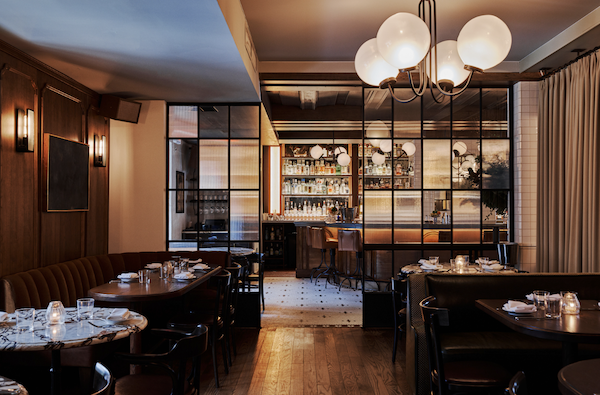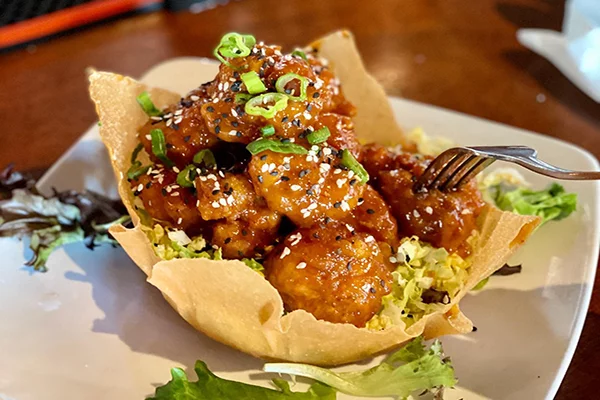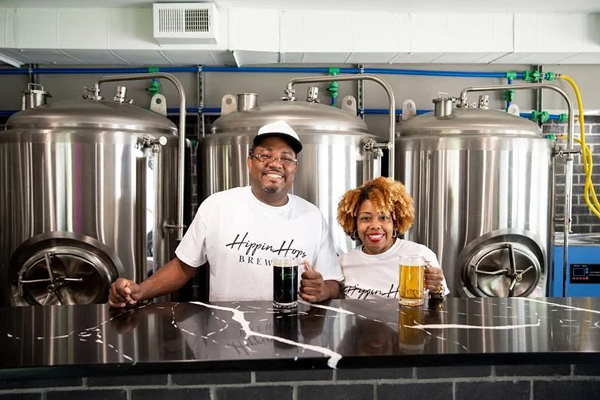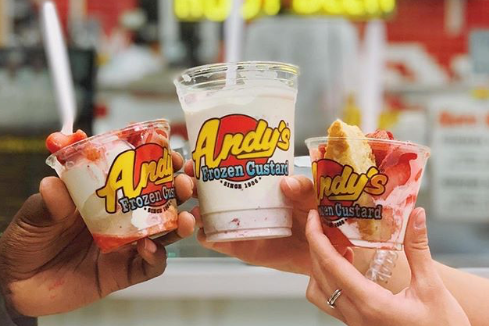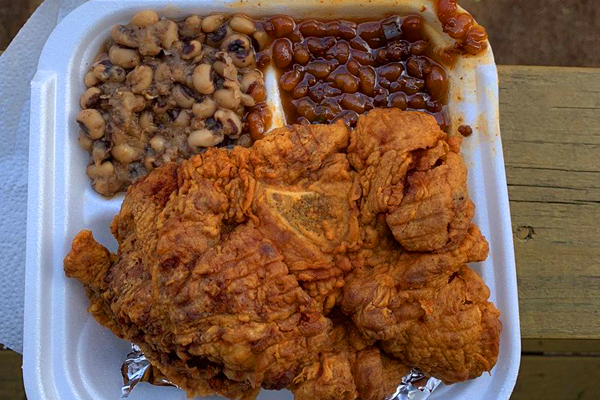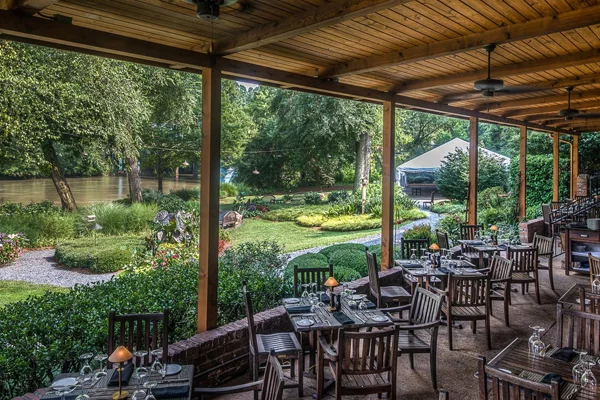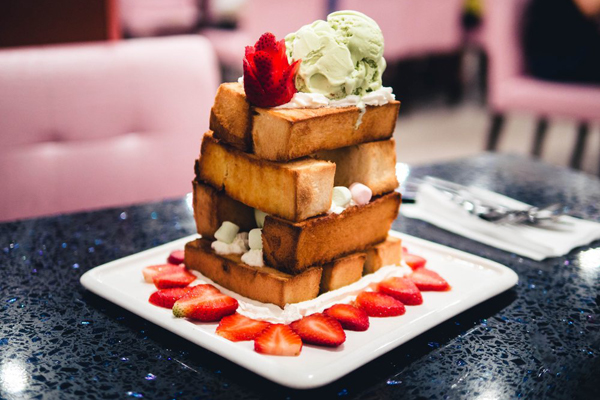Salute to Burgers: Grilling at Home
Grilling At Home
Okay, so it’s not quite summer yet. But this is Atlanta, and days when you can grill out are just a month away (if recent years are a good barometer for the weather – pun totally intended). And really, in this town the Superbowl marks the beginning of cook-out season and the BCS NCAA National Championship marks the end of it. You know what I’m talking about.
If you’re thinking of cooking out now, soon, or every free weekend from Memorial Day to Labor Day, this is a pretty good time to check your instruments. Since this is the traditional “stay inside and don’t think about grilling” time of year (in other parts of the country, but obviously not here), it’s a great time to get a deal on grills at your local hardware store. Check out the selections at Lowes and Home Depot.
What You Need (At a Minimum)
Grill — Both the Lowes and Home Depot sites have great checklists for you to figure out what’s important to you in selecting your grill.
Other than that you will need:
Spatula/turner — For flipping.
Probe thermometer — For testing the internal temperature of your burger.
Fuel — For your grill.
Fire extinguisher appropriate for your fuel — Take some time to find out the dangers of your chosen fuel, and learn how to mitigate them. Always have this on hand near your grill.
Flame retardant/heatproof glove(s) — Just in case you need to pick up a hot grill rack.
All Up In Your Grill
Burgers are relatively easy to make. You can buy a burger press, but you really don’t need to. All you need is some good quality 80 percent lean ground beef and a few minutes. Don’t buy super-lean ground beef — you want the fat to keep your burger nice and juicy.
Combine your beef with some salt and pepper, and some Worcestershire Sauce (and unless you’re pronouncing it WUSS-TA-SHER you’re pronouncing it wrong). Shape the meat into rounds of 4-6 ounces (just do the math from your beef package — if you bought 2 lbs of beef you should get 6-8 patties. Gently press them down to about 3/4 inch thick — don’t press, shape, press, because you’ll pack the meat too tightly; the less handling the better. When you have pressed out your patty, press a small dent into the middle. If you happen to have a shot glass handy they work really well. If not, your thumb is a ready-made tool for the job.
When you cook your patties, the dent will rise. If you don’t put the dent in the patty, it will bulge out anyway and you’ll have a burger that looks like a tennis ball. If you want to read some excellent science about why this happens, click here to read The Food Lab’s wonderful experiment.
What you should never, ever do when cooking your burger on any kind of grill, is smoosh it flat with your spatula. Sure, the sizzle you get when the fat hits the flame is exciting, but it means two things are happening that you don’t want to happen: 1. You just squeezed out some lovely, tasty juice, so now your burger’s probably going to be dry; and 2. You just poured liquid on the flames, and now the fire is cooler. That means it’s not going to be hot enough to put a good seared crust on your burger, and your cooking time is now all screwed up because the temperature you’re cooking in just took a nosedive.
Only turn your burger once. Cook one side, flip it, cook the other, flip it onto a bun, and done. This means that you should know a little about cooking times.
Git R Done. Or Medium Rare.
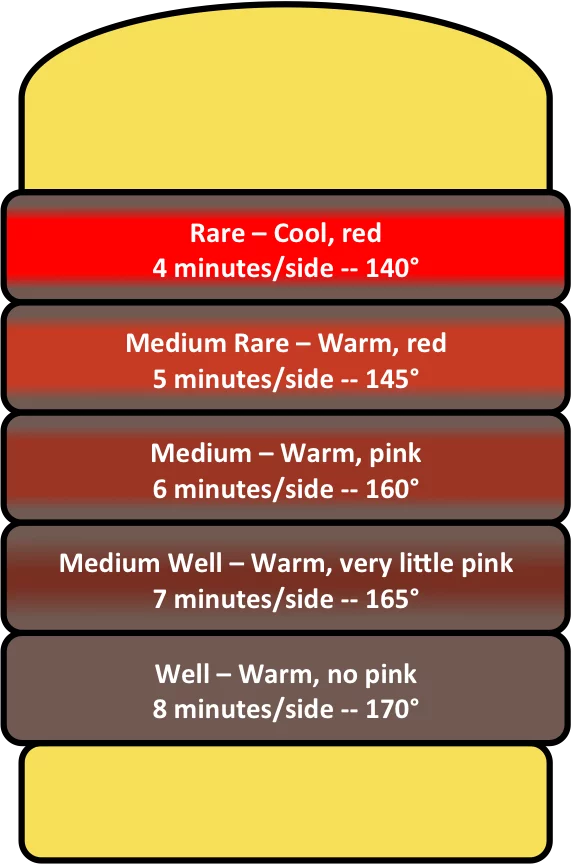
Guests at your cook out will probably like their burgers cooked to different amounts of doneness. The USDA say that you shouldn’t consume meat cooked to an internal temperature of less than 135°. Be sure your meat is cooked by using a probe thermometer stuck into the fattest part of the burger.
Somewhere around 4 minutes per side will give you rare burgers, go to 5 minutes for medium rare, 6 for medium, 7 for medium well, and 8 for well done. Why so long? Because you’re not using heat applied directly to the burger, except for on the hot grill rack which gives your burgers that great-looking grill-rack char. The heat you’re using is radiant heat, which takes a little longer.
To minimize the risk of food-borne diseases caused by bacteria, you need to get your meat from 40° to 135° quickly. Food poisoning can be anything from an upset stomach to potentially deadly. Seriously, it’s dangerous. Now I have to do math…
Safe Internal Temperatures
A steak that measures 6″ x 4″ x 1″ has a surface area of 68 square inches. If you cut that steak into two equal halves, their combined surface area is 80 square inches. If you cut the steak into 1″ cubes, the surface area grows to 144 square inches. Now imagine that same steak in quarter inch cubes, which is roughly what grinding it will do. The surface area increases to 1,536 square inches, or a rectangle measuring a little more than 3 feet by 4 feet.
But why is that important? Well, the surface of the steak is where bacteria like Escherichia Coli, which can make you sick, grows. The more surface area your meat has, the more bacteria can grow. It’s imperative that when you’re not cooking your burgers you keep them refrigerated below 40°. Bacteria is active on a bell curve — at very low or very high temperatures it’s either dormant or dead. But in that mid-range of temperatures from 40-135°, it breeds in a way that makes rabbits look like monks — doubling every 20 minutes. If the “o” in E. Coli was filled with E. Coli, there would be around a billion bacteria. If you leave the meat on the counter for the duration of a football game, the bacteria will have reproduced to the point that they outnumber the stars in the Milky Way.
At this point you’re probably good and scared, so I should say that regulations around the raising and slaughter of livestock make an outbreak of something like E. Coli incredibly rare — the CDC hasn’t reported an outbreak from contaminated beef since 2010.
Burger Time
So now you’re all ready to cook out. Whether it’s the Superbowl, a birthday, July 4th, or just a sunny Saturday afternoon listening to the Braves, you can be sure your burgers are delicious, perfectly grilled, and won’t require a visit to the doctor the next day. And that’s something I think we can all celebrate.
For Burger/Hot Dog restaurants, click here.


